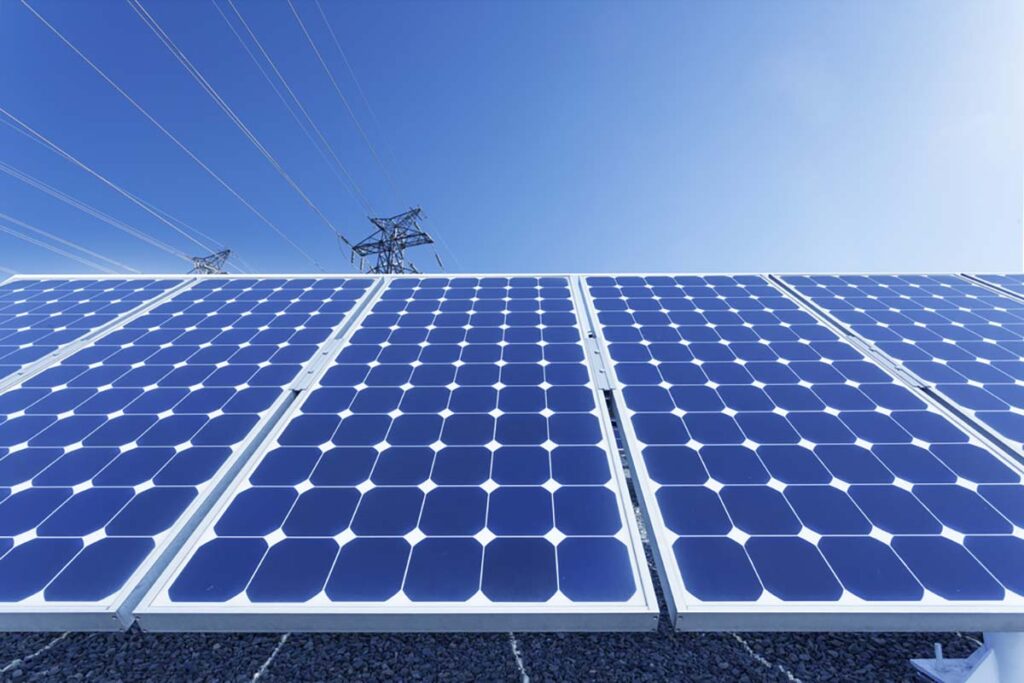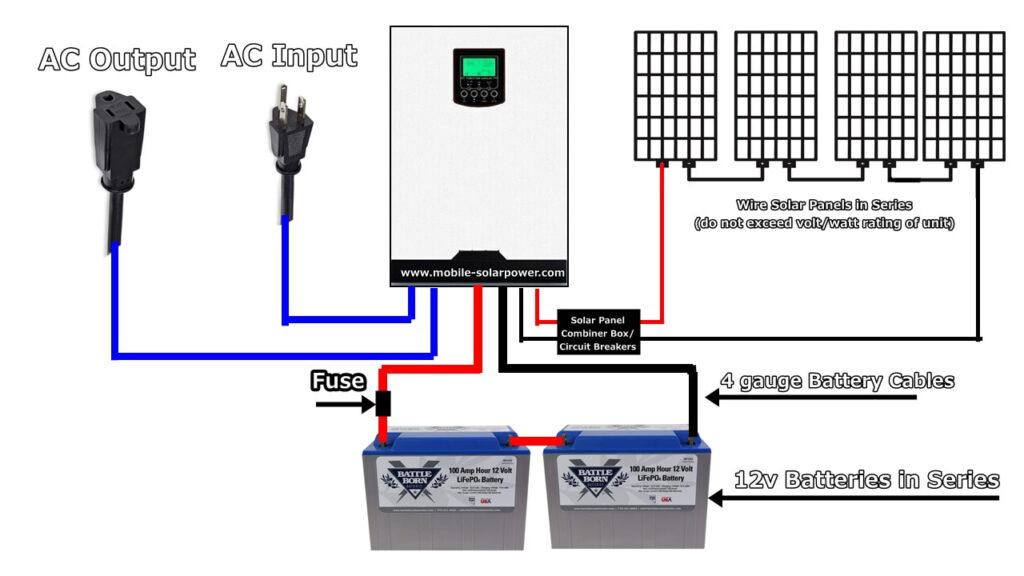When you have the proper guidelines on how to connect a solar panel to a 12-volt battery, it will be easy to operate your solar cell. You need to be lauded if you are using clean and renewable energy in the form of a solar panel to charge your batteries up.
When you wire solar panels to a 12V solar battery, it can help you charge up your power supply completely easily and affordably. It is easy to make connections.
Contents
Several Solar Panels’ Dimensions with Full Specifications
Different Solar Panel Dimensions
Solar panels are near about the same size, given that it helps get an industry standard. You can understand what should be expected when it comes to power, from a solar panel having a specific size, and how many panels should / can be there on your roof.
- Width and Length – These physical dimensions tend to vary a little. However, most companies are making these panels in regular sizes. The typical size for homes is mostly 65 X 39 inches. For commercial establishments, it is 77 X 39 inches.
- Different Purposes – There are hundreds of panels in the majority of commercial projects. Thus, slightly bigger panels are a better option. Some panels are, however, made slightly different. These are made 61 X 41 inches for residential establishments and are slightly wider and shorter as compared to regular panels.
- Depth – These panels are 1.4 – 1.8 inches in depth. However, you can find some manufacturers offering panels with a depth of 1.8 inches.
- Weight – Those for homes are around 40 pounds in weight. The ones used for commercial purposes are a little wider and are about 50 pounds in weight. How heavy solar panels are is of vital importance in areas where reinforcement is required, and where framing cannot be accessed.
Solar Panels Specifications
You can find many details and numbers on specification sheets for solar panels.
These include:
Power (Pmax)
It is the optimal wattage that can be produced by the panel under perfect conditions. When everything else is equal, it is always better to have more wattage.
Cell Type & Efficiency
Solar panels comprise of solar cells attached together by wiring. It is in these cells that sunlight is transformed into electricity. It is important to compare the efficiency of this process of conversion.
Even the most supreme solar cells commercially available have <25% efficiency in this process. It is more common to find the efficiency of 15 – 18%.
The efficiency of Monocrystalline cells is typically more when compared to Polycrystalline cells. However, both of these have higher energy than thin-film cells of amorphous silicon.
Dimensions
This includes flexibility, weight, depth, width, and length. A panel’s physical dimensions are very important when it comes to installing them over an RV roof.
Roof layouts are more flexible when narrow panels are used. These can be worked around ACs and roof vents. Flexible and thin panels are lighter and have the benefit that these can be directly mounted to a roof.
However, there is a disadvantage that these can be much hotter when there is no airspace beneath them. There is less efficiency in hot panels, and these can also heat up the insides of an RV.
Watts / Square Meter
In case there is a small surface area for your panels, you can have higher wattage on your roof with more efficient solar cells. If you wish to compare solar panels in such a fashion, multiply the width and length to calculate the area.
Divide the wattage of the panel with this value. The higher the watts per sq. m, the better it is.
Open Circuit Voltage (Voc)
It is the thing to read while testing a solar panel not attached to something and drawing power only from the sun. It would always be greater than Vmpp, which is the optimal voltage that can ever be produced by a panel.
You have to ensure that your solar panels’ Open Circuit Voltage (Voc) is in your solar charge controller’s compatible input range. As long as the Voc is within this range, you can get more headspace over the voltage of your battery that can assist with charging.
Short Circuit Current (ISC)
It refers to the amount of current that would flow in case your fingers are in touch with the two wires that come out of the panel, resulting in a short circuit. It is especially essential to make sure that you are using sufficient fuses and wires to make the installation safe.
Warranty
This is another important specification that will give you a clue to how long the panels are expected by the manufacturer to work as per specifications. A few of the robust solar panels are covered by warranties.
And stated to yield 80% rated power under regular test conditions for as long as 30 years. However, the warranties are shorter for most flexible panels.
Price / Watt & Price Range
The more affordable, the better it is – with all else being equal. At present, solar panels range from a little below 1 dollar per watt to more than 10 dollars per watt.
How Long to Charge 12V Battery with 100 Watt Solar Panel
In most situations, a solar panel capable of producing 1 Amp current takes 5 to 8 hours to be charged based on the battery size.
In order to get optimal charging by any solar panel, you need to point the panel board to the sun directly, to get the maximum current possible.
How to Connect a Solar Panel to a 12 Volt Battery
A 12V solar panel is comparatively perfect and a common choice to charge a deep cycle battery. The best way to determine the panel size you need is to calculate the number that you obtain when you multiply the board’s power load with how much time your panel gets for absorbing the sun’s energy.
On clear, sunny days, the panels will have a minimum of 4 to 6 hours for charging a 12V battery. Such a battery range can offer 12 to 18 Amp current to a deep cycle battery.
In this way, you can have a 350 ah battery usable for 5 hours at the end of a fully sunny day. Based on your budget and area you reside in, choose the best quality and highest capacity solar panel for charging batteries.
Here is how to connect a solar panel to a 12 volt battery.
Step One: Mount the Panel
First, mount your panel and keep it facing the sun.
Step Two: Associate controller and battery
Connect the cable of the 12V battery to the charge controller.
Step Three: Check your controller
Next, evaluate the charge controller.
Step Four: Join controller to panel
Wire the controller to the panel by the mec4 connector.
The solar panel can convert DC (Direct Current) electricity. Use an inverter to run or charge a device in AC (Alternating Current).
You have to follow the above-mentioned steps for how to connect a solar panel to a 12-volt battery to charge a battery with the help of a solar panel, when you happen to be outdoors or when you have to charge a 12V battery with a portable solar panel.
After you estimate your daily use, set up the battery that you need. Charge your 12V battery from a solar panel and have your backup powered. Always connect your solar panels via a regulator.
Then, connect the regulator to the 12-volt battery. The majority of regulators have particular charging profiles for various kinds of automotive batteries that are used these days commonly.
Set-up a Portable Rechargeable Solar Battery System
What Size Solar Panel to Charge 12V Battery?
A regular-sized solar panel mainly used to charge home appliances measures 65 X 39 inches. 77X39 inch panels are used to charge commercial appliances. Panels of these sizes are generally used for charging 100W, 12-volt batteries.
It can be a good idea to get in touch with a solar panel supplier and discuss your specific needs with them.
Some Common FAQs
Where to place the solar panel with respect to the sun?
You should ideally place it somewhere there is direct sunlight, to get the best performance. Try to keep it perpendicular to the direction of sunlight as much as you can.
As it is not easy to do that in actual practice, it is advisable that you keep the panels oriented in such a way that those are directed at an angle of around 45° to the north.
When is the best time to use solar panels any day?
It is in the middle of the day, when there is optimal sunlight, that your panels can offer maximum power. Peak sunlight is possible at mid-day when there is no cloud cover. Your solar panels will go on offering power at a lower pace before.
After this time, whenever the sun is out, you can have the maximum amount of sunlight. After dusk or before dawn, you will not get any power from your solar panels.
Can I have my solar panels working on cloudy days?
Although the output of solar panels is reduced in cloudy weather, they manage to produce electricity. You can have as low production as 10% of what it is when the sun is at its full strength.
With an MPPT regulator, however, you can have your panels giving maximum efficiency even in cloudy weather conditions.
How should I clean these panels?
You have to clean up these panels regularly, to be able to get optimal performance. This is because the panels’ efficiency might be reduced by anything that comes between the photovoltaic material of the cells and sunlight.
Use a microfiber cloth to clean up the panels, given that your panels’ performance might be reduced by scratches that can occur if a harsh cloth is used for cleaning.
Can my solar panels get charged when partly shaded?
When your panels are partly shaded, the cells which remain in shade will be unable to produce any power output. A panel having bypass diodes will make sure that even when a cell happens to be in shade and is not yielding any power.
The rest of the cells and the entire panel will still generate some energy. When partly shaded, panels not having any bypass diode will have all power drained out.
Is it normal for solar panels to get too hot when left out under direct sunlight?
Yes, and this occurs due to two reasons.
- When direct rays of the sun fall on the panel surface. There is a rise in the temperature of panels – which is what happens with any other material.
- When the light of the sun excites the free electrons, which never flow to produce electricity, they release heat as they come back to a normal state.
Where should I mount the battery?
This is of importance. For instance, in case you have plans to set your battery within a caravan, go for a sealed battery. This is because, at the time of being charged, toxic gases would be generated by an unsealed battery.
12-Volt Inverter & Battery Wiring Guide
Conclusion
So that is how to connect a solar panel to a 12-volt battery. Keep in mind that you have always to connect your solar panels via a regulator. Then, connect the regulator to the battery.
A regulator is necessary, as it makes sure that none of the excessive voltage that comes from a solar panels’ output on sunny days can end up causing battery damage.
Each regulator/panel has a set of directions that show how the regulator/panel needs to be connected to the battery.

